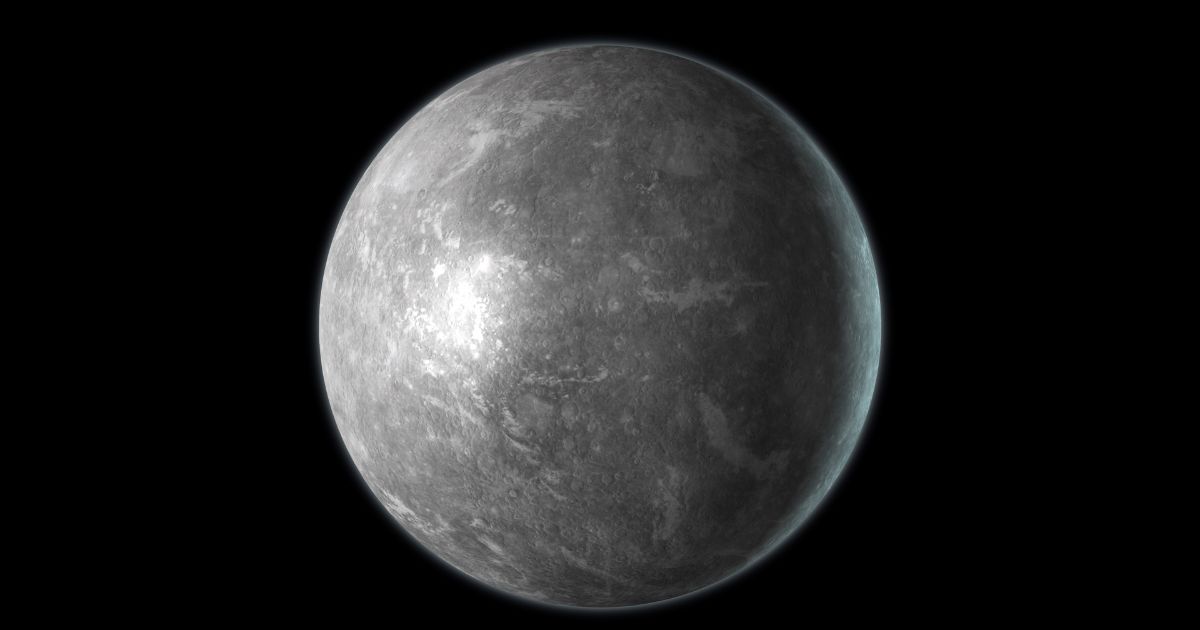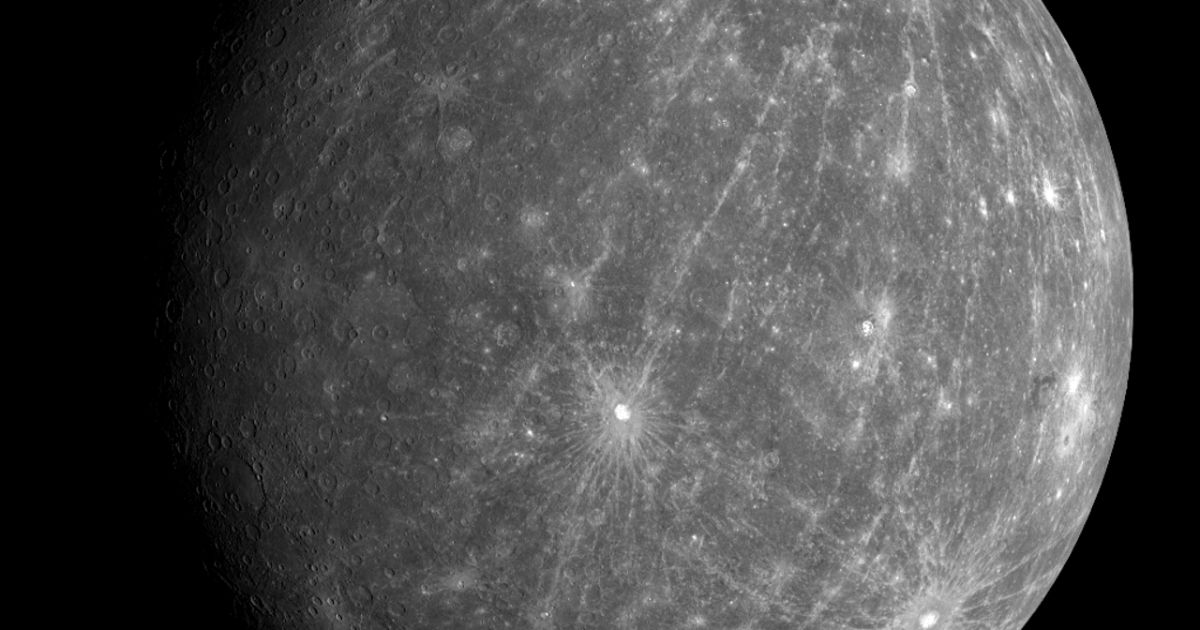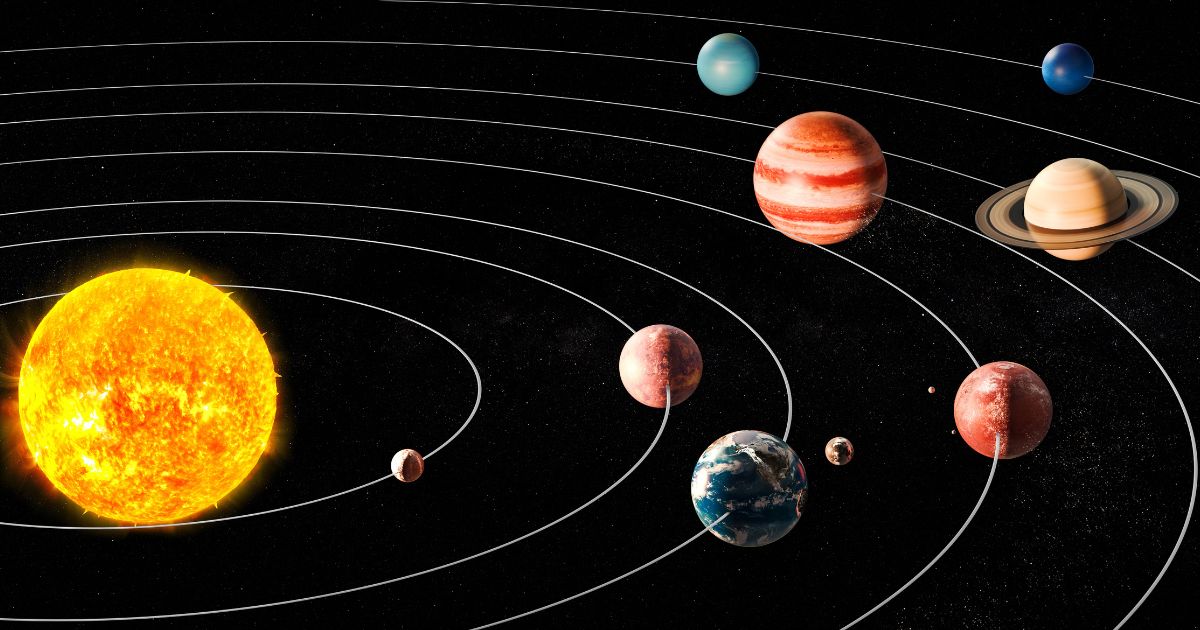Mercury, what an interesting planet! The first planet, smallest, and greyest planet of them all! It may seem like there’s only a few things to know about this tiny dwarf. But don’t let size fool you because Mercury is packed full of interesting features with more being discovered each day.

Mercury Seen From Space
40+ Mind Blowing Facts About Mercury
Mercury is the first planet in the Solar System (closest planet to the Sun)
Mercury is the smallest planet in the Solar System
It is named after the Roman god of messengers
It is one of the 4 rocky, inner planets known as terrestrial planets
Mercury has no moons, in fact, no natural satellites orbit the planet
Mercury’s orbits the Sun in one of the most elliptical paths in the entire solar system
It varies from 29 million miles (47 million kilometers) to 43 million miles (69 million kilometers) from the Sun
One day on Mercury is around 59 Earth days
One year on Mercury is around 88 Earth Days
Mercury is faster than any other planet in the solar system
Mercury has a phenomenon known as a Retrograde where it moves backwards across the sky for a couple weeks every year
Mercury has a super thin atmosphere
It’s atmosphere is called an exosphere
It’s so thin that individual atoms can float past it into space
Mercury’s exosphere is made of small amounts of hydrogen, helium, and other gasses
Due to its weak atmosphere and long rotation period, days are very hot and nights are very cold
The temperature on the side facing the sun can reach almost 800 degrees fahrenheit (430 degrees Celsius)!
On the side facing away from the sun temperatures can reach -290 degrees Fahrenheit (-180 degrees Celsius)!
This is one of the most extreme temperature variations in the Solar System!
Mercury’s core, made of iron, makes up 42% of its volume
Compared to Earth’s magnetic field, Mercury’s is extremely weak
It is only about 1% as strong as Earth’s
It may be weak, but it’s the only thing preventing Mercury’s exosphere from floating into space
Mercury’s surface has lots of craters, it almost looks like the Moon’s surface
The planet has very low albedo meaning that it is not very reflective. In fact, Mercury is one of the least reflective planets in the solar system
One of the larger crater is called Caloris Basin and it reaches almost 960 miles across
Mercury has long, tall mountains known as scraps
Mercury has an unusual rotation that is most likely caused by tidal forces from the sun
It is locked in a 3:2 spin-orbit ratio. This means for every 3 rotations it makes 2 revolutions around the sun
The MESSENGER was NASA’s first mission to Mercury
This mission lasted from 2011-2015 with a goal to learn more about Mercury’s surface, atmosphere, and geochemistry
It is very difficult to view Mercury from Earth due to it being so close to the sun
Mercury’s gravity is 38% of Earth’s
This means that if you weighed 100 pounds on Earth, you would weigh 38 pounds on Mercury
The earliest known records of Mercury were found from Babylonian Astronomers in 1,000 BC
Mercury is sometimes called the “morning star” or “evening star” because it is periodically visible in the morning or evening sky
Mercury has a pinkish hue during sunrise or sunset due to the scattering of sunlight from its thin atmosphere.
The intense heat and radiation from the Sun cause Mercury’s surface to darken over time
Sunsets on Mercury appear 2 times as fast as on Earth
Mercury’s rotational axis is only tilted 1 degree
Despite being so close to the Sun, water-ice exists in areas of permanent shade
Mercury’s magnetosphere extends far behind the planet due to the interaction between its magnetic field and solar winds
The spacecraft BepiColombo is a part of a 2018 exploration led by the European and Japanese Space programs

Up-Close Image of Mercury
Frequently Asked Questions; For those Extra Curious
What is Mercury retrograde?
Mercury has a very unique orbit and every year there are a few weeks that it appears to move across the night sky in the opposite direction! This is an optical illusion because all the other planets are moving faster than it.
How many moons does Mercury have?
Mercury has no moons, in fact, it has no natural satellites meaning nothing obits it. Scientists believe this is the case because Mercury is so close to the Sun.
What color is Mercury?
Mercury is a dark gray color which is the same color as the rock and dust that coat its surface. This is known as regolith. Mercury, however, is getting dark each minute due to the extreme heat and radiation from the Sun.
What is Mercury made of?
Mercury is a terrestrial planet meaning it is rocky and has a firm surface. Its surface is made of rocks, dust, metals and aluminum while its core is made mostly of iron.
How did Mercury get its name?
Mercury, like all other planets, is named after a Roman god. In this case, Mercury is the Roman messenger god.
How long is a day on Mercury?
Mercury spins much slower than Earth so 1 day is about 59 Earth days!
When was Mercury discovered?
Mercury was discovered in about 1000 B.C. with that being its earliest recorded date.
Does Mercury have an atmosphere?
Yes, Mercury does have an atmosphere but it is extremely thin. It’s so thin that atoms can escape out into space. This has earned it a special name, an exosphere.

Whole Solar System, Mercury is right next to the Sun
That’s all astronomers! Mercury is and will always be one of the most interesting planets in all of the solar system. We continue to send missions and probes to the planet to study more about its surface, origin, and behaviors. Maybe one day you can be a part of one!
Want to learn more about the planets in our solar system? Check out these other articles:

Leave a Reply